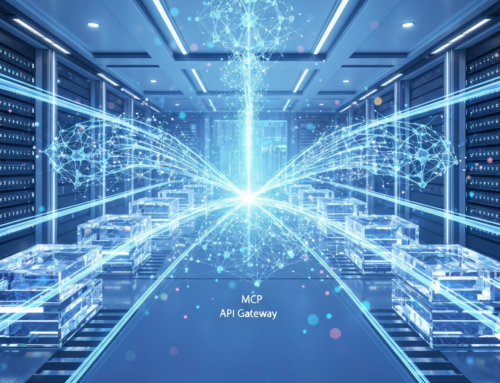The Workflow Revolution: Why AI Orchestration is the Key to Intelligent Automation
In the modern enterprise landscape, the adoption of Artificial Intelligence (AI) has moved beyond isolated models to integrated, cross-functional systems. The true bottleneck for many organizations is not the lack of powerful AI tools, but the inability to coordinate them effectively. This is where the strategic advantage of AI orchestration for intelligent automation becomes clear. It represents the essential middleware layer that transforms siloed AI components—from predictive models to Large Language Models (LLMs)—into a unified, autonomous workforce.
Without orchestration, businesses are left with a collection of specialized tools that fail to communicate, resulting in fractured workflows, manual hand-offs, and ultimately, a failure to scale. The workflow revolution is not about adopting more AI; it is about strategically connecting and managing that AI to execute complex, multi-step processes reliably. This intelligent coordination is the difference between small-scale experimentation and maximum business impact.
Defining AI orchestration for intelligent automation: A Strategic Framework
AI orchestration is the mechanism that manages the complex flow of data, decisions, and actions across a diverse ecosystem of systems, human touchpoints, and AI services. Strategically, it is the conductor of the digital symphony. It is responsible for sequencing tasks, applying decision logic based on real-time outputs, managing context, and handling errors across the entire process chain. For enterprises, this framework offers a definitive shift from reactive task automation to proactive, intelligent operations.
A successful orchestration framework is characterized by four core strategic elements:
- System Agnosticism: The ability to seamlessly integrate diverse AI models (e.g., computer vision, predictive analytics, LLMs) and backend systems (CRM, ERP, legacy databases) regardless of their vendor or technological foundation.
- Context Management: Maintaining and passing the necessary information and history between workflow steps, allowing the system to handle multi-turn, stateful processes.
- Dynamic Decisioning: Incorporating complex, adaptive logic that allows the workflow to choose the next best action in real-time based on the output of a preceding AI service.
- Observability and Governance: Providing a centralized view for monitoring performance, auditing decisions, and ensuring compliance across all automated processes.
By establishing this framework, businesses move from managing disparate AI projects to deploying cohesive, business-critical automation.
The Core Components of an Intelligent System: LLMs, AI Agents, and API Integrations
The power of a unified system orchestrated for intelligent automation stems from the synergistic relationship between its components. These elements act as the brain, the doers, and the limbs of the automated enterprise:
LLMs and Foundational Models: The Brain
Large Language Models (LLMs) provide the reasoning and natural language processing capabilities that elevate simple automation to true intelligence. In an orchestrated workflow, the LLM acts as the decision-maker, interpreting unstructured inputs, formulating complex plans, and generating the necessary output that guides the next step of the process. For example, an LLM can analyze a customer email’s sentiment, classify the request type, and determine which specialized AI agent should handle it next.
AI Agents: The Doers
AI Agents are specialized, autonomous entities designed to complete specific, complex tasks. Unlike simple scripts, agents can observe their environment, form a goal, decide which tools (APIs) to use, and execute a plan to achieve that goal. When orchestrated, multiple agents can collaborate on a single, high-level objective, such as an “onboarding agent” coordinating tasks with a “document parsing agent” and a “CRM update agent.”
API Integrations: The Limbs
APIs are the essential connectors, or the “limbs,” that allow the intelligent system to interact with the real world and internal software stack. Whether it’s fetching data from a cloud database, sending a notification via a communication platform, or updating a financial ledger, robust API integration is the mandatory foundation of any scalable orchestration layer. Tools that simplify and standardize these connections are critical for reducing technical debt and increasing deployment speed.
From Data to Decision: How Orchestration Powers Automated Data Processing and NLP
In most enterprises, critical data remains locked in unstructured formats—emails, PDFs, contracts, and call transcripts. Orchestration provides the pathway to convert this chaos into clean, actionable intelligence, a process heavily reliant on sophisticated Natural Language Processing (NLP).
The orchestrated flow for automated data processing typically involves:
- Ingestion and Preparation: An automation tool monitors various sources (e.g., an email inbox or a shared drive), extracts documents, and passes them to a specialized service (like Unstructured.io) for cleaning and formatting.
- Contextual Interpretation (NLP): The prepared content is routed to an LLM or a fine-tuned NLP model. The model interprets the text, identifies key entities (names, dates, dollar amounts), and extracts the intent.
- Decision Routing: Based on the extracted intent, the orchestration logic determines the next step. For instance, if a contract is detected, it is automatically routed to a different compliance workflow than a general inquiry.
This automated data processing loop significantly accelerates time-to-insight and minimizes the cost and error associated with manual data entry or analysis. This ability to transform raw input into structured, decision-ready data is the tangible core benefit of **AI orchestration for intelligent automation**.
Achieving Maximum Business Impact: Scalability, Efficiency, and Reliable Governance
The shift to orchestrated AI is a strategic move defined by measurable business outcomes, not merely technological adoption. The maximum impact is realized through improved scalability, massive efficiency gains, and centralized governance.
Scalability and Resilience
An orchestrated system is designed for high availability and elastic scalability. Because the workflow itself handles logic, error handling, and retry mechanisms, a system can automatically scale up resources during peak loads and gracefully degrade or recover from failures in individual components. For a growing business, this means the intelligent system can handle 10x or 100x the workload without a corresponding spike in personnel or system downtime.
Operational Efficiency and Cost Reduction
By automating complex, cross-functional processes, organizations realize efficiency improvements far beyond simple RPA (Robotic Process Automation) task completion. Orchestrated systems eliminate the friction points between departments, reduce latency in decision-making, and allow high-value employees to focus on strategic work. The result is a significant reduction in operational expenditure and a faster velocity of business operations.
Reliable Governance and Auditing
As regulatory scrutiny increases, the ability to trace every automated decision becomes paramount. Orchestration platforms provide a single source of truth for all intelligent workflows, offering detailed logs, version control, and audit trails for every step, every tool call, and every decision made by an LLM or agent. This level of reliable governance is non-negotiable for industries dealing with sensitive customer data or complex compliance requirements.
Building Custom AI Solutions: n8n Workflows and Agentic Architecture (Strategy, Not Code)
The choice of platform for implementing **AI orchestration for intelligent automation** should be a strategic decision focused on flexibility, integration capability, and scalability. Tools like n8n stand out because they embrace an open, extensible, and modular approach to workflow automation, which is ideal for supporting complex agentic architectures.
The strategic value of a platform like n8n lies in its:
"A workflow tool must act as the control panel, not the code container. The goal is to visually map and manage complex agentic logic and API dependencies, making the entire intelligence network observable and adaptable."
Strategic considerations for using n8n and Agentic Architecture:
- Workflow Visualization: Use the graphical interface to map complex, multi-stage processes that involve several AI agents and dozens of API calls, ensuring non-technical stakeholders can understand the business logic.
- Tool & Function Calling: Utilize n8n’s robust API integration capabilities to equip AI agents with the tools they need to interact with external systems (e.g., a “Sales Agent” using the HubSpot API or a “Finance Agent” using a custom Python script).
- Custom Node Development (Extensibility): For enterprise-specific needs, the ability to rapidly develop custom nodes (like Python or FastAPI backend services) and integrate them seamlessly into the orchestration layer is a critical capability. This prevents vendor lock-in and future-proofs the solution.
This approach emphasizes building custom, high-value AI solutions not by writing mountains of code, but by strategically designing and connecting autonomous, intelligent workflows.
Your Next Step: Partnering for Strategic AI Consulting and Implementation
Transitioning to an orchestrated, agentic architecture is a significant undertaking that requires deep expertise in both business strategy and advanced technical implementation. For business owners and technical leaders, the key challenge is navigating the complexity of model selection, integrating legacy systems, and designing resilient, compliant workflows.
Idea Forge Studios specializes in bridging this gap. Our focus is on providing high-level strategic consulting and meticulous implementation services that ensure your AI investments directly translate into measurable business growth and operational efficiency. We partner with you to:
- Audit Existing Workflows: Identify the highest-impact processes for AI-driven transformation.
- Design Agentic Architectures: Create customized, multi-agent systems using platforms like n8n, Python, and FastAPI to handle your most complex business problems.
- Ensure Enterprise-Grade Governance: Implement the observability, security, and audit trails required for large-scale, mission-critical operations.
Mastering the Workflow Revolution: Final Thoughts on Future-Proofing Business Automation
The era of simple, single-task automation is rapidly closing. The future of business efficiency belongs to those who master **AI orchestration for intelligent automation**. By treating orchestration not as a simple task runner, but as the central nervous system of the autonomous enterprise, organizations can unlock unprecedented levels of efficiency, responsiveness, and strategic capability.
Future-proofing your business means designing systems that can intelligently adapt, integrate new AI technologies as they emerge, and scale without incurring prohibitive technical debt. Embracing a robust, strategically managed orchestration layer is the most critical decision a leader can make today to ensure their workflows do not just perform tasks, but truly drive the business forward.
Ready to move from fragmented AI tools to unified, intelligent automation? Idea Forge Studios specializes in designing and implementing the strategic orchestration frameworks your business needs for maximum impact. Schedule a strategic consultation or request a quote today to discuss your complex workflow challenges.
You can also reach us directly: Call (980) 322-4500 or Email info@ideaforgestudios.com.








Get Social